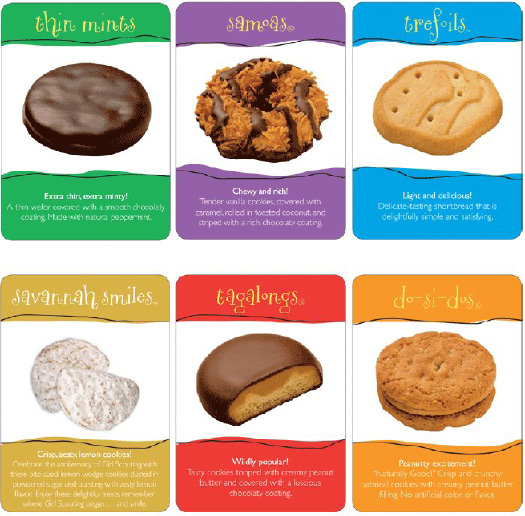
Individuals can now choose from a variety of cookies, from most popular to recently added flavors. Credit:@cckingtweets
The following article depicts the history of the sales of Girl Scout cookies. This information was obtained from Girl Scouts of Tropical Florida.
The Girl Scout cookies sales began in the year 1917. It commenced in the mini kitchens and ovens of the girls and their moms as voluntary work. According to the Girl Scouts of Tropical Florida, the primary purpose of the sale of cookies was to finance troop activities. Also, the first location of cookies sold was in high school cafeterias as a service project.
As time progressed in the 1920s, Girl Scouts in various parts of the world began to bake sugar cookies with their moms. The cookies were packaged in wax paper, sealed with the Girl Scout sticker and sold door to door for the price of 25-35 cents per dozen.
Meanwhile, the 1930s was a remarkable year for the evolution of the sales of cookies. Girl Scout cookies had progressed to being sold at the city’s gas stations in Philadelphia and through the windows of electrical companies. The cookies were priced at 23 cents per box of 44 cookies, or six boxes for $1.24. These changes enabled the girls to develop their marketing and business skills as well as raise funds for their organization. In 1935, cookies were sold commercially; in the shape of a trefoil, “Girl Scout Cookies” was printed on the boxes for sale.
Girl Scout cookies had taken the world by storm, in 1937, where over 125 Girl Scout councils reported to having cookie sales.
In the 1940s, Girl Scout cookies were sold by local councils around the country until World War II. Because of the war, sugar, flour, and butter were in short supply. This shortage of baking supplies revolutionized the Girl Scouts to sell their first Girl Scout calendars in 1944 as an alternative to raise funds. As cookie sales increased in 1948, 29 bakers were licensed to bake Girl Scout cookies.
The 1950s marked a pivotal year for the Girl Scout cookies as they went from simple sugar cookies to being sold in flavors, such as Sandwich, Shortbread, and Chocolate, which are currently known as Thin Mints. Also, at this time, Girl Scouts had progressed their sales in the shopping malls. In 1955, the flavors of Girl Scout cookies further evolved to a variety of choices, such as vanilla-based filled cookies, chocolate-based filled, shortbread, and chocolate mint.
In the 1960s, the Girl Scout had experienced a significant increase in the sales of cookies; licensed bakers mixed batters for thousands of Girl Scouts annually. The bakers had begun to wrap the cookies in aluminum foil and cellophane to preserve freshness. In addition, Peanut Butter was a new flavor added to the Girl Scout cookies.
Girl Scout cookie boxes in the 1790s began to have designs in addition to pictures of Girl Scouts in action, engaging in activities, such as hiking and canoeing. In the year 1979, the Girl Scout cookie boxes had become more attractive with the appearance of the Girl Scout logo.
The 1980s of the Girl Scout cookies evolution had produced a variety of seven cookies in addition to three mandatories, which were Thin Mints, Peanut Butter Sandwiches, and Shortbreads.
Everyone seemed to love a delicious sugar cookie; however, in the 1990s, Girl Scout cookies had begun to cater to diabetics and produced low-fat, sugar-free cookies.
As time progressed in the early 2000s, Girl Scout cookie boxes were designed in outstanding bright colors and were kosher branded.
In 2010, the Girl Scout Organization declared its first annual Girl Scout Cookie weekend. Moreover, in 2014, the Girl Scouts had launched a Digital Cookie Platform which is a safe and interactive forum for the girls to sell cookies.
The evolution of the origin of Girl Scout cookies increased so much over the years that in 2016, Girl Scout cookies were sold at the Academy Awards in Hollywood. Girl Scout S’mores had become a new cookie flavor, as well.





